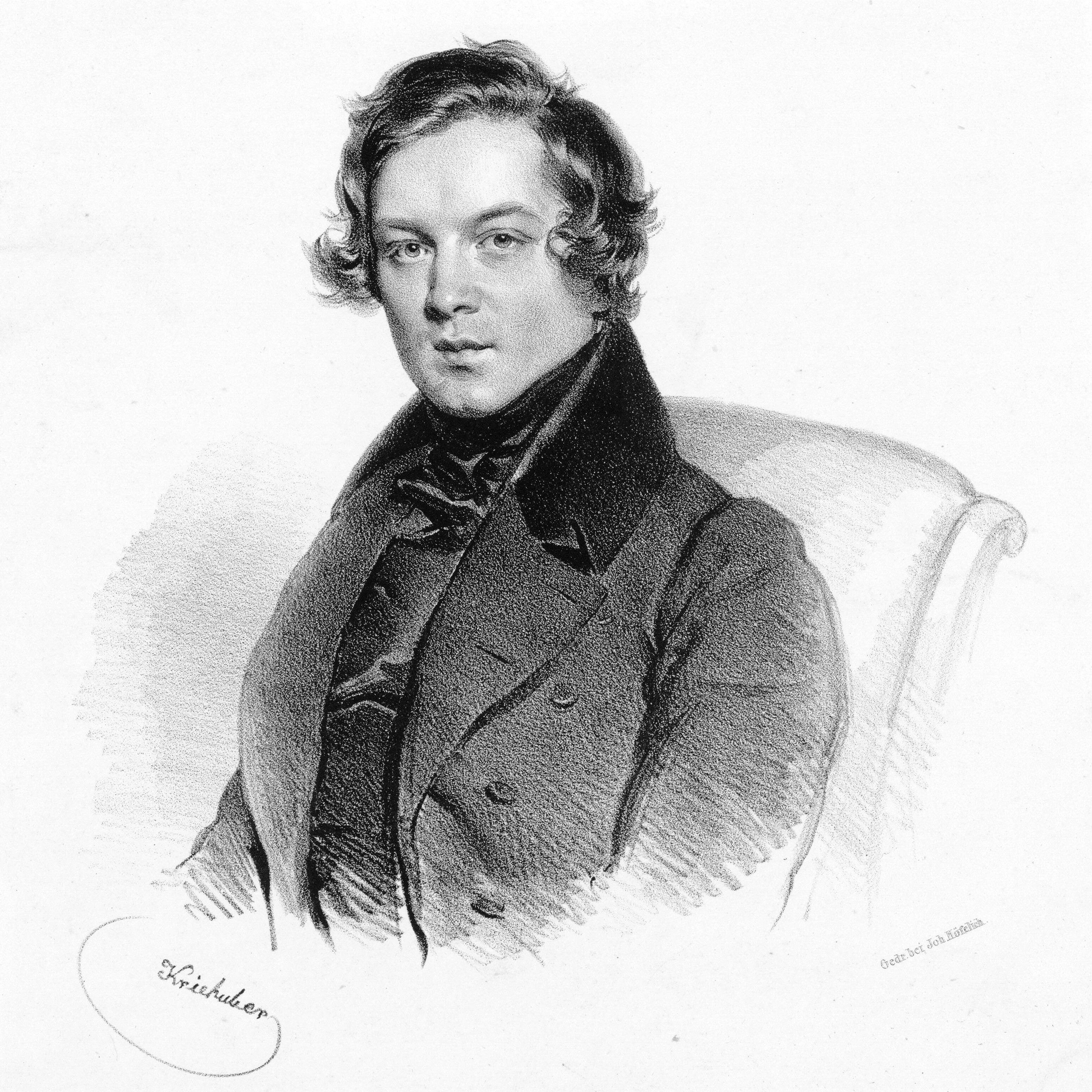
Piano Quintet (Schumann)
The Piano Quintet in E-flat major, Op. 44, by Robert Schumann was composed in 1842 and received its first public performance the following year. Noted for its "extroverted, exuberant" character, Schumann's piano quintet is considered one of his finest compositions and a major work of nineteenth-century chamber music.[1] Composed for piano and string quartet, the work revolutionized the instrumentation and musical character of the piano quintet and established it as a quintessentially Romantic genre.
Piano Quintet
The autograph manuscript of the work is preserved in the Universitäts- und Landesbibliothek Bonn.
Instrumentation and genre[edit]
Schumann's piano quintet is scored for piano and string quartet (two violins, viola, and cello).
Schumann's pairing the piano with an ordinary string quartet reflected the changing technical capabilities of the piano and the cultural importance of the quartet. By 1842, the string quartet had come to be regarded as the most significant and prestigious of the chamber music ensembles, while advances in the design of the piano had increased its power and dynamic range. Bringing the piano and string quartet together, Schumann's quintet exploits fully the expressive capacity of these forces in combination, alternating conversational passages between the five instruments with concerto-like sections in which the combined forces of the strings are massed against the piano. At a time when chamber music was moving out of the salon and into public concert halls, Schumann reimagined the piano quintet as a musical genre "suspended between private and public spheres" according to Daverio, alternating between "quasi-symphonic and more properly chamber-like elements."[2]
Influences of Beethoven and Schubert on the piano quintet[edit]
Tovey remarks the formal influence which Beethoven exerted over the quintet. He argues that the final movement's lengthy coda is a typically Beethovenian device, and likens the quintet in this respect to the ninth and fourteenth string quartets. He writes that the scherzo so much reflects his style that it "might almost have come from Beethoven."[7]
Daverio has argued that the quintet was influenced by Schubert's Piano Trio No. 2 in E-flat major, a work Schumann had studied and performed intensively over several months in 1828-1829 and which he greatly admired, describing it as Schubert's "immortal trio."[8] Both works are in the key of E-flat, feature a funeral march in the second movement, and conclude with finales dramatically resurrecting earlier thematic material, a composition technique called cyclic form.[8]
Reception and influence[edit]
Schumann's piano quintet was widely acclaimed and much imitated.[13] Its success firmly established the piano quintet as a significant, and quintessentially Romantic, chamber music genre.[14] The Piano Quintet in F minor, Op. 34 of Johannes Brahms, reworked from an earlier sonata for two pianos (itself a reworking of an earlier string quintet) at the urging of Clara Schumann, was one of a number of later piano quintets that show Schumann's influence and adopt his choice of instrumentation.
Schumann's Piano Quintet failed to please at least one discriminating listener: Franz Liszt heard the piece performed at Schumann's home in 1848 and described it as "somewhat too Leipzigerisch," a reference to the conservative music of composers from Leipzig, especially Felix Mendelssohn. Schumann took enormous offense at this remark, especially because Mendelssohn, who was a great friend of Schumann's and whom Schumann somewhat idolised, had died only a year earlier. By some accounts Schumann rushed at Liszt and seized him by the shoulders. Liszt eventually apologised.[13] Schumann did not forget Liszt's offhanded insult, and mentioned it several times in letters to Liszt. Liszt's relationship with the Schumanns was never entirely mended.[15]
Use in later art and music[edit]
The funeral march theme of the second movement is prominently used as the main theme of the film Fanny and Alexander by Ingmar Bergman, and is played on violin by Rutger Hauer's character Lothos while Buffy kills the vampire portrayed by Paul Reubens in the 1992 feature Buffy the Vampire Slayer. It is also featured prominently on the all-classical soundtrack of the noted 1934 horror film The Black Cat. It is used several times in Yorgos Lanthimos' 2018 period piece The Favourite.